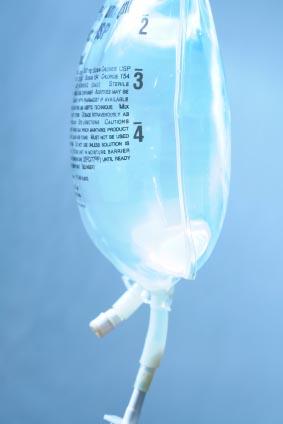
DMPS chelation on autistic children is a highly controversial treatment. Medical experts and parents are divided on whether chelation methods improve autism symptoms. A number of medical experts also question the safety of using DMPS on children. What exactly is DMPS chelation and does it improve autism?
DMPS Chelation Overview
A significant portion of the autism community uses DMPS chelation as a biomedical or alternative treatment to traditional medicine.
What is DMPS Chelation?
Chelation therapy involves administering chelating agents to remove toxic metals from the body. DMPS is the acronym for 2.3-dimercapto-1-propanesulfonic acid sodium or 2.3 dimercaptopropane sulfonate. DMPS chelation can remove mercury and lead from the body.
Why Use DMPS Chelation for Autism?
While there is no known cause of autism, mercury exposure and environmental toxins are among the possible theories. Advocates for DMPS chelation claim that DMPS effectively removes mercury better than other chelating agents do.
Some recent studies provide evidence for mercury exposure as a possible autism cause. A study conducted by health researchers at the University of Texas tracked the mercury levels in the areas close to power plants and its relationship to the number of children diagnosed with autism. Researchers found that a large number of children living near the power plants developed autism. Proponents of autism's possible link to mercury and other environmental toxins may support a form of chelation such as DMPS.
The Administration of DMPS Chelation
First, a doctor establishes that a person has been exposed to mercury through various methods such as blood tests or a chelation challenge test. During a chelation challenge test, a doctor administers a chelating drug and then performs a timed urine test to assess the amount of toxic materials, such as mercury, present. When mercury exposure is diagnosed, the doctor may order DMPS chelation.
A physician should perform DMPS chelation. DMPS is usually administered intravenously. However, transdermal and oral forms of DMPS are also available for chelation therapy.
Anyone considering DMPS chelation should consult with an experienced physician who is familiar with both autism and chelation therapy. It is not recommended to attempt chelation in any form without medical supervision because of the risk of potentially fatal complications.
About DMPS Chelation on Autistic Children
The use of DMPS chelation on autistic children is controversial because of the lack of scientific research, the lack of Food and Drug Administration (FDA) approval and safety concerns over DMPS' possible serious side effects on a growing child.
Possible Side Effects
Generally, DMPS chelation side effects are usually mild. Common minor side effects include:
- Yeast or bacterial imbalance and/or infection
- Depletion of trace minerals such as zinc
- Rashes
- Fever
- Nausea with or without vomiting
- Headache
- Stomach pain
Serious side effects are rare and may affect the kidney, liver and bone marrow. Rare side effects are as follows:
- Hypocalcemia
- Low blood pressure
- Bone marrow depression
Traditional Medical View of Chelation
The traditional medical community does not endorse any form of chelation therapy as an autism treatment. The FDA does not approve of DMPS as a treatment for autism and considers DMPS experimental. The Centers for Disease Control and Prevention (CDC) has no official comment on the use of chelation treatments for autism.
What Parents and Caregivers Should Know
Parents and caregivers of autistic children should research DMPS chelation carefully before making any decisions. Each case of autism is unique. Parents and caregivers should consult with their children's doctors and therapists before making treatment decisions or exploring alternative medicine. They can also contact various autism experts and support organizations that represent both points of view on chelation.
The following online resources may be helpful:
- Autism Society of America: This autism support group is a helpful resource for finding local help and autism information.
- Autism Research Institute: The Autism Research Institute and creator of the DAN program have a list of DAN physicians and information on DMPS chelation therapy.
- Science Based Medicine: Science Based Medicine has an article arguing against chelation therapy for autism.
- Talk About Curing Autism: TACA has a number of articles on chelation therapy and other alternative treatments.
- Generation Rescue: Jenny McCarthy's autism support organization has information supporting chelation treatments.
- Looking Up Autism: The site has an article about the dangers of EDTA (ethylene diamine tetraacetic acid) chelation.
- Autism Speaks: Autism Speaks provides helpful traditional and alternative medical autism resources.
Conclusion
There is no clear scientific evidence on whether or not DMPS chelation on autistic children effectively treats autism symptoms. Autism experts remain divided on the effectiveness and safety of DMPS chelation. The lack of FDA approval for DMPS and the absence of scientific proof will prevent many autism experts and families from pursuing DMPS therapy for their children. Yet, families of autistic children who have seen positive results from DMPS chelation argue that the treatment works. Clearly, there is a need for more research to determine the safety and effectiveness of DMPS chelation on autism.







